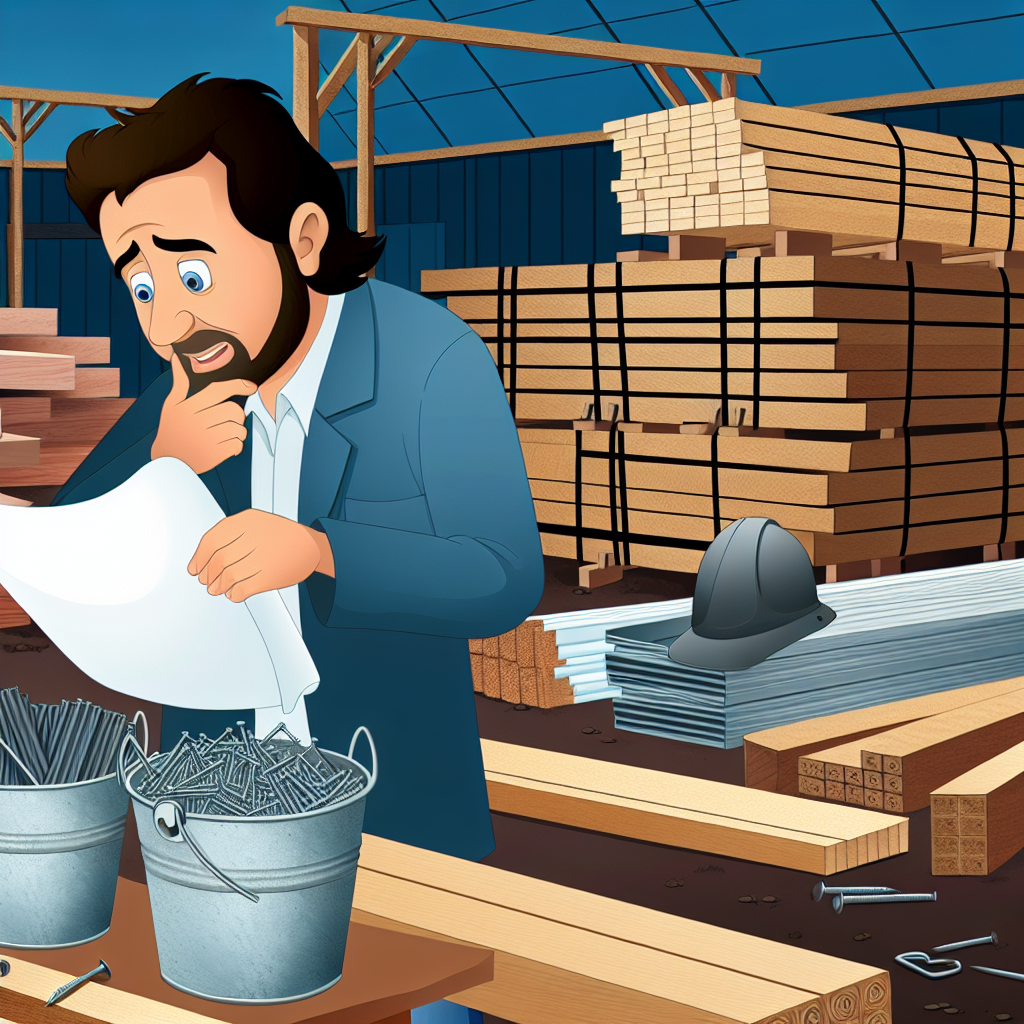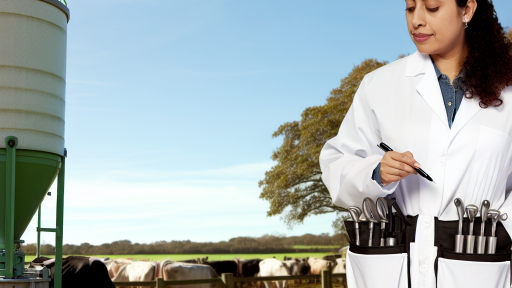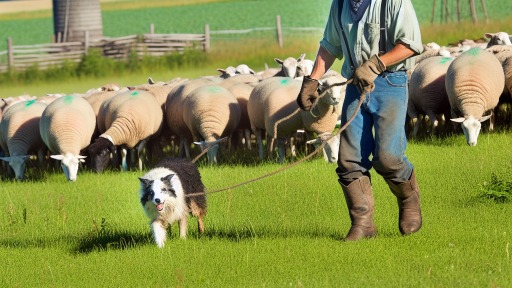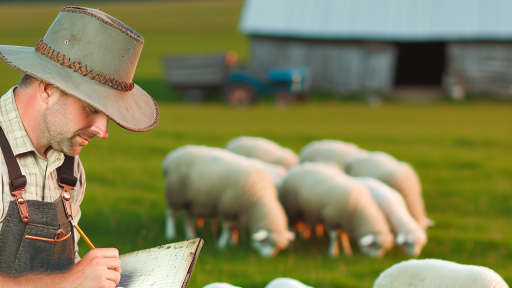Understanding the Climate and Weather Conditions for Livestock Shelters
Assessing Local Climate
Begin by evaluating your local climate conditions.
Identify the typical temperature ranges throughout the year.
Consider seasonal weather changes in your area.
Understand humidity levels and their impact on livestock health.
Temperature Considerations
Different livestock species have varying temperature tolerances.
For instance, cattle thrive in moderate temperatures.
Conversely, sheep can tolerate colder conditions more easily.
Ensure that shelters provide heat during winter and ventilation in summer.
Seasonal Weather Patterns
Analyze how seasons affect shelter requirements.
In warmer months, prioritize cooling options to prevent heat stress.
During winter, focus on insulation to retain warmth.
Adapt the shelter design to accommodate heavy snowfall or rain, if applicable.
Wind and Precipitation
Examine prevailing wind patterns in your location.
Windbreaks can significantly enhance livestock comfort and health.
Account for local precipitation levels when designing shelters.
Transform Your Agribusiness
Unlock your farm's potential with expert advice tailored to your needs. Get actionable steps that drive real results.
Get StartedEnsure adequate drainage to prevent flooding and moisture buildup.
Emergency Weather Preparedness
Prepare for extreme weather events, such as storms or heatwaves.
Establish protocols for quickly securing livestock during severe conditions.
Install backup systems like generators for power outages during storms.
Consider developing a communication plan with local authorities for updates.
Assessing the Different Types of Shelter Materials: Pros and Cons
Wood
Wood is a widely used material for livestock shelters.
It provides excellent insulation and aesthetic appeal.
However, wood can be more expensive than other options.
Additionally, it requires regular maintenance to prevent decay.
Metal
Metal shelters are durable and long-lasting.
They withstand extreme weather conditions effectively.
On the downside, metal can become very hot in the sun.
Furthermore, it may require insulation for warmer climates.
Polyethylene
Polyethylene is lightweight and easy to install.
This material is also waterproof and resistant to UV rays.
Nevertheless, it may not be as durable as wood or metal.
Moreover, it can be prone to tearing under stress.
Concrete
Concrete provides exceptional strength and durability.
It requires minimal upkeep over time.
However, concrete lacks insulation properties for cold climates.
Additionally, initial costs can be significantly higher.
Straw Bales
Straw bales are an eco-friendly and economical option.
They offer good insulation against cold temperatures.
Yet, straw may attract pests and can deteriorate quickly.
Showcase Your Farming Business
Publish your professional farming services profile on our blog for a one-time fee of $200 and reach a dedicated audience of farmers and agribusiness owners.
Publish Your ProfileRegular replacement becomes necessary for maintaining usability.
Fabric Structures
Fabric structures are flexible and quick to set up.
They are often less expensive than traditional buildings.
However, they may not provide the same longevity as solid structures.
Wind and heavy snow can compromise their integrity.
Choosing the Right Material
Selecting the right shelter material depends on multiple factors.
Consider your local climate, budget, and livestock needs.
Evaluate the pros and cons of each material thoroughly.
This ensures the best possible living conditions for your animals.
Evaluating Durability and Longevity of Various Shelter Materials
Importance of Material Selection
Choosing the right materials influences the lifespan of livestock shelters.
Durability ensures that shelters withstand harsh weather conditions.
Longevity reduces the need for frequent replacements.
Common Shelter Materials
Several materials are commonly used for livestock shelters.
Wood is a traditional choice known for its insulation properties.
Metal frames offer sturdiness and resistance to pests.
Fabric structures are lightweight and portable.
Concrete provides excellent durability but can be costly.
Evaluating Wood as a Shelter Material
Wood offers aesthetic appeal and good insulation.
This natural material requires proper treatment against rot.
Regular maintenance can extend its lifespan significantly.
Assessing Metal Options
Metal shelters are popular for their strength and resilience.
Galvanized steel resists rust and corrosion effectively.
However, metal can conduct heat, so insulation is crucial.
Exploring Fabric Structures
Fabric shelters are flexible and quick to set up.
These structures typically have lower initial costs.
Nonetheless, they may not withstand severe weather conditions.
Regular inspections are essential to ensure safety.
Concrete Durability
Concrete offers unparalleled strength and stability.
It is resistant to most environmental challenges.
However, concrete shelters can be expensive to construct.
Additionally, they may lack proper insulation, affecting animals.
Factors Affecting Material Longevity
The climate significantly impacts the durability of shelter materials.
Areas with extreme weather need more robust solutions.
Consideration of animal behaviors is essential.
For example, chewing animals can damage wooden structures.
Making an Informed Decision
Ultimately, evaluate all these factors before choosing a material.
Consider both short-term costs and long-term benefits.
Consulting with specialists can provide valuable insights.
By carefully evaluating, you ensure a safe and durable shelter.
Delve into the Subject: Managing Livestock Manure For Soil Health
Showcase Your Farming Business
Publish your professional farming services profile on our blog for a one-time fee of $200 and reach a dedicated audience of farmers and agribusiness owners.
Publish Your ProfileCost Analysis: Budgeting for Shelter Construction and Maintenance
Understanding Initial Costs
Initial costs significantly impact your livestock shelter project.
First, consider costs for materials such as wood, metal, or fabric.
Each material carries different price points and durability.
Furthermore, design complexity also influences these initial costs.
Keep in mind that local building codes may add extra expenses.
Evaluating Long-Term Maintenance Expenses
Maintenance is a crucial long-term cost factor.
Regular upkeep ensures the shelter remains safe and effective.
First, forecast costs for cleaning, repairs, and inspections.
Additionally, factor in replacement costs for worn-out materials.
Choosing durable materials can lower overall maintenance expenses.
Creating a Balanced Budget
A balanced budget helps you allocate resources effectively.
Start by determining your overall budget for the project.
Next, break down costs into categories for clearer analysis.
Prioritize essential features over optional upgrades.
Regularly review and adjust the budget as needed throughout the project.
Gain Insights from Experienced Farmers
Learning from others’ experiences can guide your budgeting process.
Connect with local farmers who have built shelters recently.
Ask about their estimated costs and lessons learned.
Consider attending workshops focused on livestock shelter construction.
Networking with other farmers helps you gain valuable insights.
Exploring Financing Options
Several financing options can support your shelter project.
Traditional bank loans often offer low-interest rates.
Additionally, government grants may be available for agricultural improvements.
Explore cooperative funding opportunities with local farming groups.
Research online platforms that specialize in agricultural financing.
Explore Further: Best Practices for Safe Livestock Transportation
Designing Shelters for Specific Types of Livestock
Cattle Shelter Design
Cattle require spacious shelters for comfort and safety.
Farmers should consider the climate when designing these structures.
Open-sided barns work well in warm areas, but closed designs suit colder climates.
Insulation plays a crucial role in keeping cattle warm during winter months.
Provide proper ventilation to maintain air quality and reduce humidity.
Flooring should be durable, easy to clean, and non-slippery.
Incorporate space for feeding and watering to prevent overcrowding.
Sheep Shelter Design
Sheep shelters should prioritize protection from elements like wind and rain.
Low-profile structures are effective in areas with heavy snowfall.
Designs should allow for proper ventilation to keep the sheep dry.
Additionally, consider using straw or other bedding materials for warmth.
Include areas for feeding and shearing to facilitate daily management.
Utilizing natural materials can enhance the aesthetics of the farm.
Goat Shelter Design
Goats are agile and curious creatures that need secure housing.
Showcase Your Farming Business
Publish your professional farming services profile on our blog for a one-time fee of $200 and reach a dedicated audience of farmers and agribusiness owners.
Publish Your ProfileFencing is essential to keep goats from escaping or getting into trouble.
Design shelters with enough space for hiding and climbing.
Consider using simple, open structures to allow for social interaction.
Non-slip flooring is especially important to prevent injuries.
Provide shaded areas to protect goats from direct sunlight.
Ensure easy access to food and water throughout the day.
Discover More: Managing Beef Cattle Lifecycle from Birth to Market

Insulation and Ventilation: Ensuring Comfort for Your Livestock
Importance of Insulation
Insulation plays a vital role in maintaining a stable environment for livestock.
It reduces heat loss during colder months.
Conversely, good insulation keeps the shelter cool in warmer months.
This stability directly influences the health and productivity of the animals.
Types of Insulation Materials
Several materials can effectively insulate livestock shelters.
- Plywood is a durable option, offering decent thermal performance.
- EPS foam provides excellent insulation and is lightweight.
- Spray foam yields a high R-value for superior thermal resistance.
- Fiberglass batts are commonly used for their affordability and effectiveness.
Each material has its advantages based on the climate and specific needs.
Ventilation Needs
Proper ventilation ensures a healthy living environment for livestock.
It helps remove excess heat and moisture from the shelter.
Good airflow reduces the risk of respiratory issues in animals.
Moreover, effective ventilation minimizes harmful odors from ammonia buildup.
Methods of Achieving Adequate Ventilation
There are several methods to ventilate livestock shelters effectively.
- Natural ventilation utilizes windows and openings to promote airflow.
- Mechanical ventilation relies on fans to circulate air within the shelter.
- Cross-ventilation enhances airflow by placing openings on opposite walls.
- Roof vents allow hot air to escape, drawing cooler air in through lower openings.
Choosing the right ventilation method depends on the shelter design and animal needs.
Balancing Insulation and Ventilation
Finding a balance between insulation and ventilation is crucial.
Excessive insulation without proper ventilation can trap heat and moisture.
This situation can lead to health problems for livestock.
Conversely, too much ventilation can compromise energy efficiency.
Stable conditions promote overall animal well-being and productivity.
Find Out More: Effective Strategies for Large-Scale Livestock Transport
Local Regulations and Building Codes Impacting Shelter Materials
Understanding Local Regulations
Local regulations vary by region and significantly impact shelter construction.
These regulations ensure the safety and welfare of both animals and farmers.
Before commencing any project, familiarize yourself with local guidelines.
Consult local agricultural offices for specific requirements.
Building Codes and Their Importance
Building codes dictate the materials and methods allowed for construction.
These codes reflect safety standards and environmental considerations.
Compliance with building codes protects the investment in livestock shelters.
Failure to adhere to codes may result in fines or required demolitions.
Material Specifications in Local Codes
Local building codes often specify types of materials for livestock shelters.
Commonly approved materials include steel, wood, and concrete.
Each material has its advantages and disadvantages, influenced by local conditions.
For instance, wooden structures offer insulation but may require more maintenance.
Environmental Considerations
Regulations may also address environmental impacts of shelter materials.
For example, certain materials might be restricted to minimize pollution.
Using sustainable materials often aligns with local environmental policies.
Showcase Your Farming Business
Publish your professional farming services profile on our blog for a one-time fee of $200 and reach a dedicated audience of farmers and agribusiness owners.
Publish Your ProfileConsider eco-friendly alternatives whenever possible to meet these regulations.
Insurance and Liability Requirements
Insurance providers often require compliance with local building codes.
Therefore, reviewing these regulations can minimize risks and liabilities.
Adhering to codes may also lower insurance premiums.
Engage with your insurance agent to understand specific requirements related to shelters.
Sustainability and Eco-Friendliness: Choosing Green Materials for Shelters
Importance of Sustainable Materials
Sustainable materials significantly reduce environmental impact.
They contribute to the well-being of livestock and the ecosystem.
Moreover, using green materials can lower long-term costs.
Types of Eco-Friendly Materials
Many options exist for eco-friendly materials in livestock shelters.
Reclaimed wood offers durability and reduces waste.
Straw bales can provide excellent insulation for shelters.
Furthermore, corrugated metal is both recycled and recyclable.
Evaluating Material Sources
It’s crucial to assess where materials originate.
Locally sourced materials minimize transportation emissions.
Additionally, certified sustainable products often meet specific environmental standards.
Benefits of Green Materials
Using eco-friendly materials positions your farm as environmentally responsible.
This approach appeals to consumers increasingly concerned about sustainability.
Additionally, it fosters healthier living conditions for livestock.
Best Practices for Implementation
Start by researching suppliers that focus on sustainability.
Evaluate material performance, including durability and insulation.
Plan for the future by considering potential environmental impacts.
Finally, involve your team in the decision-making process.




